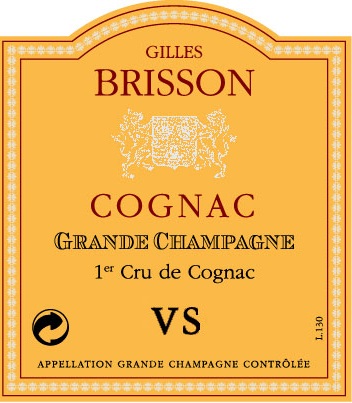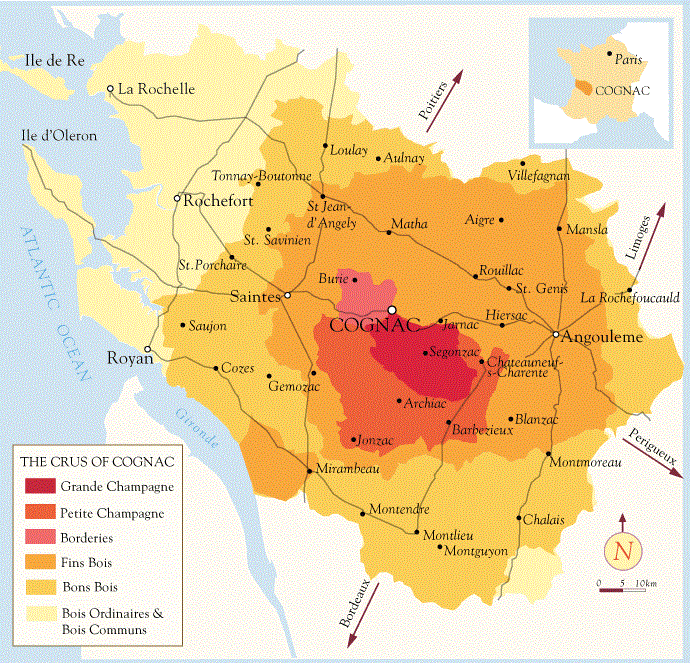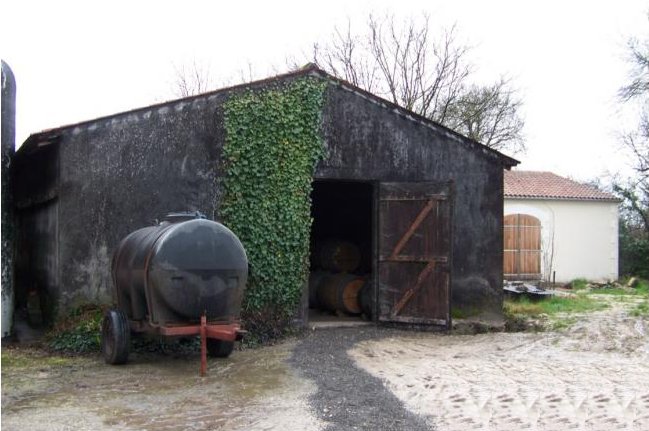Domaine Gilles Brisson

| Country & Region | France, Southwest |
| Appellation(s) | Cognac |
| Producer | Cyril Brisson with sons Alexis and Loan |
| Founded | Cyril is the 4th generation to farm the domaine; he took over from his father in 1989. |
C yril Brisson is his family’s fourth generation to run Domaine Gilles Brisson. He’s a couple of miles south of the river town of Cognac, in the prized Grande Champagne zone, and it’s here that he farms 69 acres of Ugni Blanc. These parcels are the sole source of wine that is double-distilled for his Cognacs.
The zone—the prestigious core of Cognac—gives him the right to label the Brisson spirits as 1er Cru. The champagne name stems from the Roman occupation and from their Latin campania, the root of campaign and champagne, and refers to level, open ground. Both the regions of Cognac and Champagne have vast open fields. Roman legions preferred to fight in the open, and in Gaul these tended coincidently to be formed by limestone chalk geology. Such landscapes came to be known as ideal for grape crops, largely because little clearing was required, and grapes, unlike many crops, took to limestone. Similarly, the Cognac regions of Fin Bois and Bon Bois received their names based upon the density of their woods, and presumably the proportionate difficulty in farming due to the clearing required.

Cyril took over from his father in 1989, and recently his sons Alexis and Loan have joined him. The family’s notable points:
• Their Cognac is estate-bottled from their grapes in the Grande Champagne zone.
• The Gilles Brisson domaine was the first in Cognac to receive HVE 3, the highest level of that certification for good environmental practices.
• Only the coeur de chauffe, or the finest cut of the distillation, is used for their Cognacs (the rest is sold off).
• Excellent price/quality ratios.

Below is a link to a concise history of Cognac. An interesting bit of history that isn’t noted there is how the Roaring Twenties and Prohibition were instrumental in the creation of a number of classic Cognac cocktails, such as the Sidecar, Corpse Reviver, and Vieux Carré.
Some disturbing facts about the current commercial situation are that Cognac has roughly 4,500 producers, yet four large brands account for nearly 90% of sales. When Cyril took over from his father in 1983, there were roughly 20,000 producers.
The Spirits
| Wine | Blend | Description |
|---|---|---|
| Pineau des Charentes | 40% Colombard, 40% Folle Blanche, 20% Sémillon | A traditional mix of unfermented grape juice and Cognac. Legend has it that in the 16th century a cellar worker poured grape must into a barrel he thought empty, but in fact contained some Cognac. A few years hence, the barrel was tapped, and the drink became associated with the region of Charente. Other parts of France have their own version of this mix, such as Macvin in Jura, Floc de Gascogne in Armagnac, and Pommeau in Calvados. Economically, production of this doesn’t pencil out in small lots, thus the Brisson family, like most in Cognac, actually buys this from the farmer in Bon Bois who makes the vast majority of Pineau des Charentes on the market, selling in bulk to producers who then bottle it. |
| Cognac VS | Ugni Blanc | Legally, the youngest spirit in the mix of Very Special must have been aged at least two years in barrel. In Brisson’s case, the youngest is aged at least three to four years in wood. What’s more important than age, however, is balance and complexity, and a house style. |
| Cognac VSOP | Ugni Blanc | The legal age requirement for Very Special Old Pale is four years in wood. Chez Brisson, the youngest spirit in their VSOP will have seen between five and six years in barrel before bottling. |